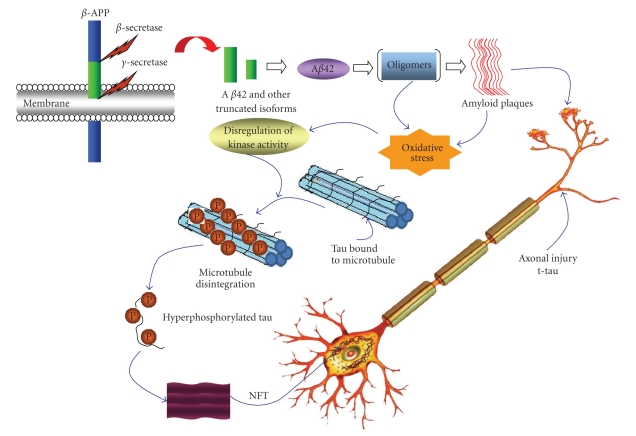Figure 1.
Pathological cascades and potential biomarkers of AD. Proteolytic cleavage of APP first by β-secretase followed by γ-secretase can produce Aβ42 and other shorter Aβ fragments. The subsequent aggregation of Aβ42 results in oligomers and amyloid fibrils. Amyloid fibrils are eventually deposited as senile plaques as shown. The toxicity of oligomers and amyloid fibrils could lead to the cascade of tau-hyperphosphorylation, which is otherwise bound to microtubules, providing microtubule stability. Upon hyperphosphorylation, tau dissociates from microtubules and aggregates into NFT, which could eventually cause increased cytoskeleton flexibility and neuronal death.

